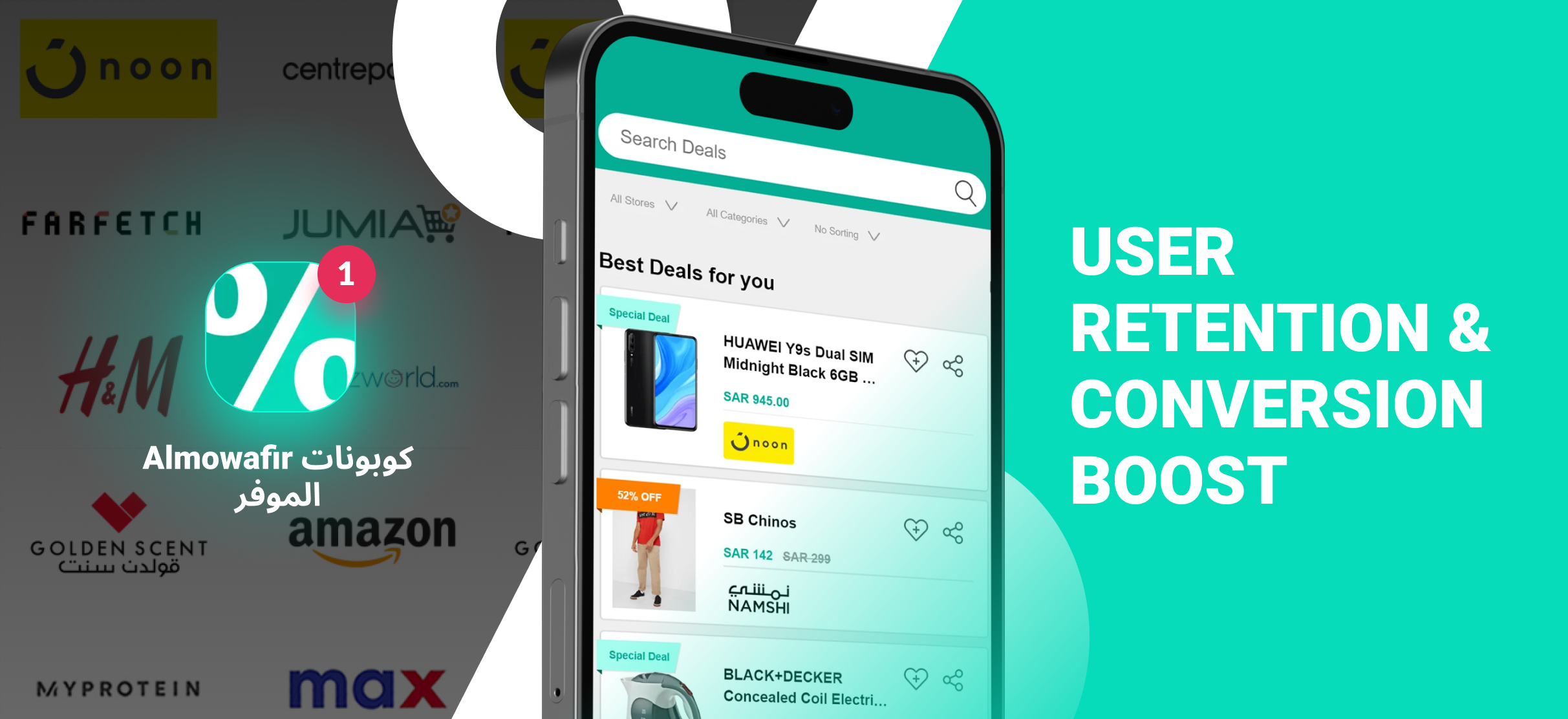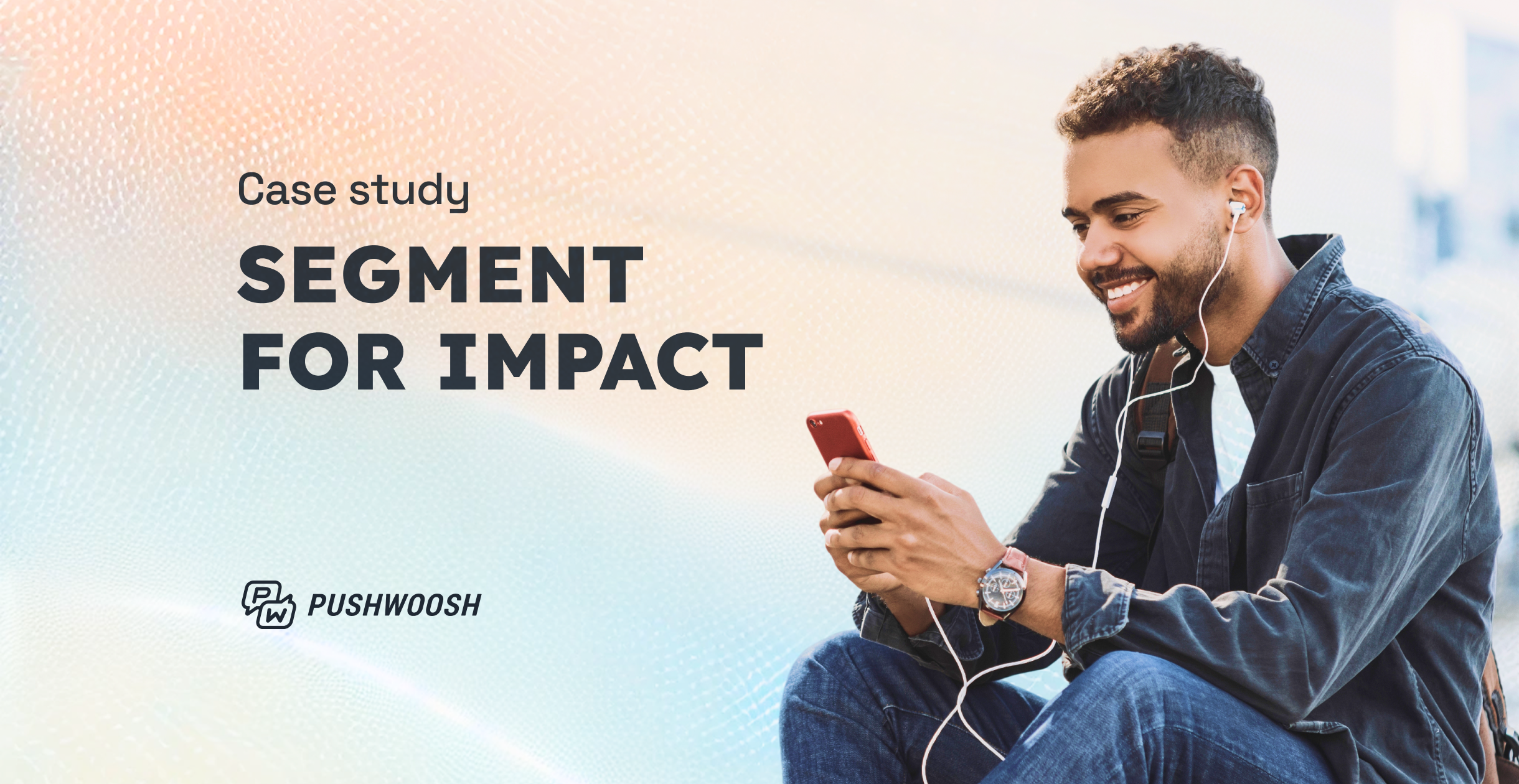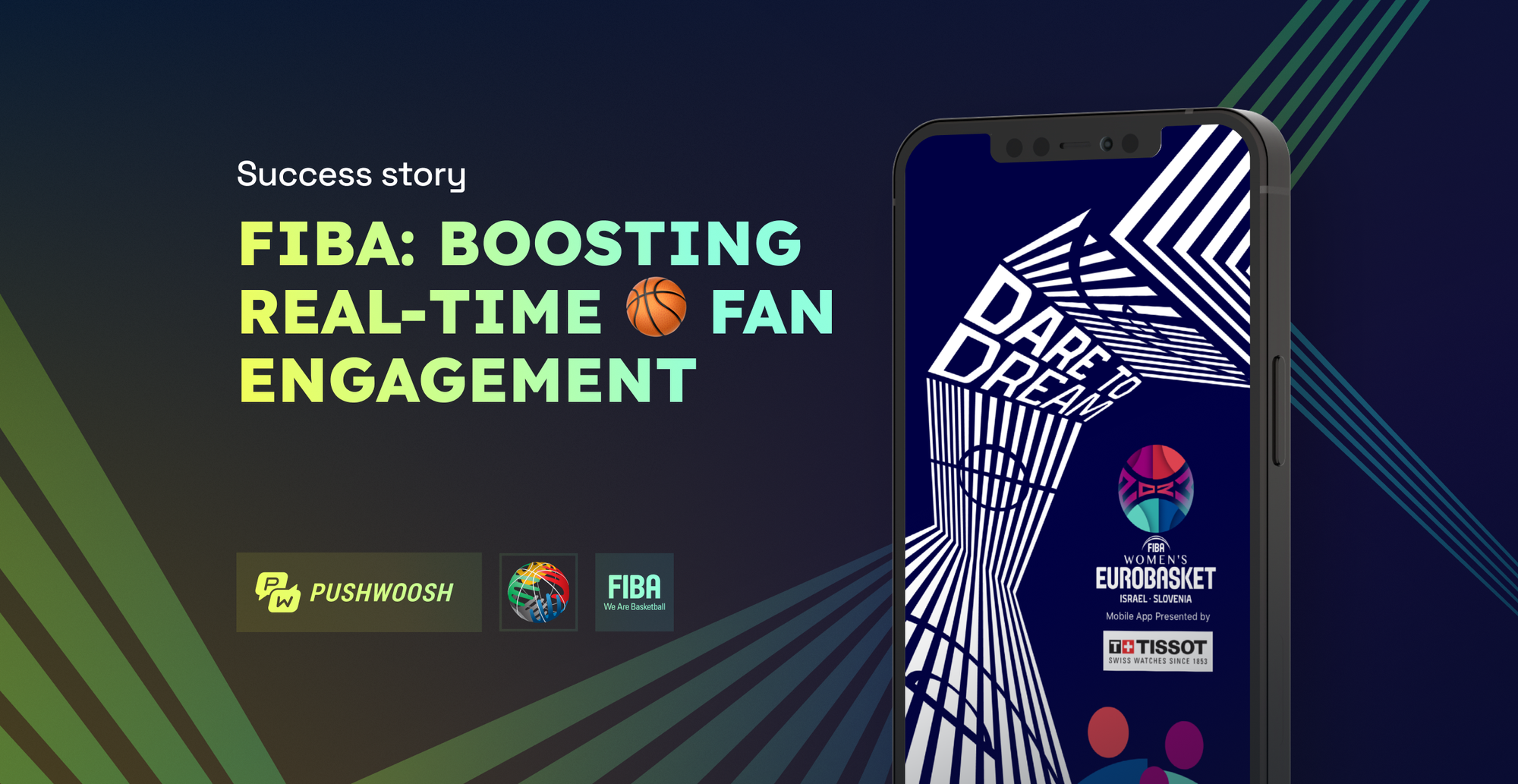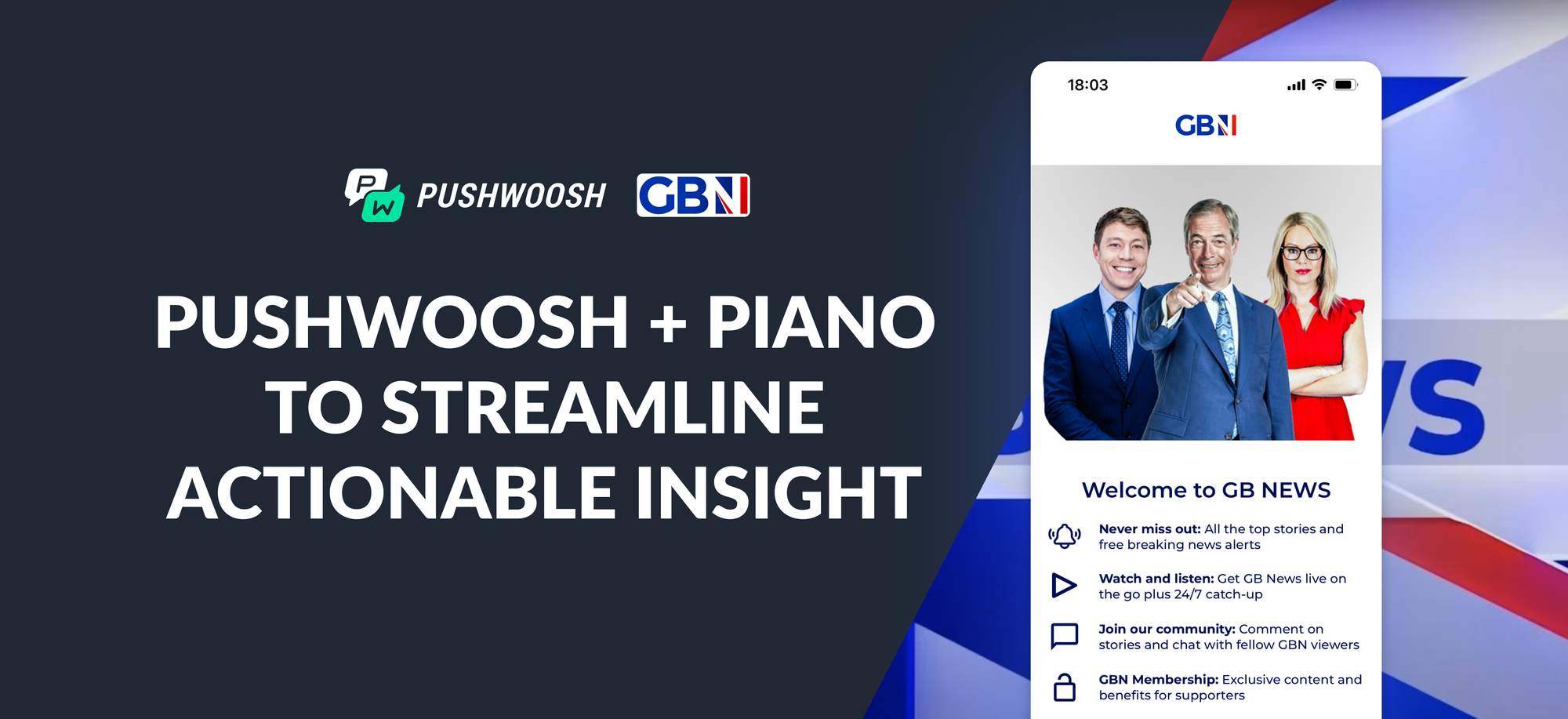Omada has mastered lifecycle marketing with Pushwoosh
In the pursuit of transforming one-time users into loyal customers, the question arises: how can a coupons & discounts app effectively engage and retain its million-user audience? 🤔
Omada steps forward, unveiling its winning formula: for its Almowafir app, the company has crafted a lifecycle messaging strategy powered by Pushwoosh. Leveraging advanced automation and personalization tools, the app targets users at key touchpoints of their journeys for onboarding, (re)engagement, and loyalty campaigns. As a result, Almowafir has achieved a 67.4% conversion rate to the target action after onboarding and has seen a 4% increase in Day 30 retention.
Mark Astrin
Product and Development Manager at Omada
We have been with Pushwoosh for over 5 years, and it says a lot!
About Omada
Omada is a powerhouse behind Almowafir, a leading coupons & discounts platform. The project is renowned for its devotion to innovative technologies and high-quality coupons.
Almowafir is the Gulf Cooperation Council’s (GCC’s) #1 coupons & discounts provider for several reasons:
1️⃣ The app collaborates with over 1000 of the top international and local stores to offer best-in-class codes and deals.
2️⃣ Almowafir’s expert team of coupon pickers constantly monitors the market to deliver the latest and best discounts. They work round-the-clock to ensure that all codes are updated, verified, and live.
3️⃣ Almowafir’s technical team has innovated a host of proprietary tools including browser extensions and native apps to make sure that users can easily find and use Almowafir discounts where and when it is convenient for them.
Almowafir collaborates with top International and GCC brands like Noon, Namshi, Amazon, and Aliexpress.
Challenge: Retain the fluctuating audience
Like other similar coupon & discount services, Almowafir faces the challenge of a fluctuating user base, as not everyone can afford or needs to make frequent purchases.
Omada recognized the need to make a lasting impression by offering exceptional value, personalized experiences, and seamless user journeys that would inspire users to continue using Almowafir beyond their initial interaction.
Omada looked for a messaging automation solution and customer engagement platform that would encourage users to:
✅ Perform target actions during the onboarding process;
✅ Re-engage with the app for further purchases;
✅ Become loyal customers and promoters.
Pushwoosh played a pivotal role in achieving these goals by providing the necessary tools and capabilities.
Solution: Use Pushwoosh to the max for automated lifecycle marketing
Omada has been working with Pushwoosh since 2014, building a great partnership over the years. The team has fully adopted Pushwoosh Customer Journey Builder, currently running 51 active journeys! 🚀
Within these journeys, the company leverages a diverse range of functionalities:
- Behavior-based messaging: tracking user-triggered Events and tailoring the subsequent messaging flow depending on user engagement;
- Segmentation: assigning Tags according to user characteristics (country, products, brands, loyalty level, etc.) or triggered Events (“Active/Not active”, “First day user”, “Last Open”, etc.) to approach users differently in the future;
Mark Astrin
Product and Development Manager at Omada
In the past year, Pushwoosh’s abilities in user segmentation have significantly improved. The new option for “Or” in the Tags selection has improved our abilities and reduced the time to send pushes. It’s quite easy to create a segment and use it, and now with the new event-based segments it is even more powerful!
- Time Delay: delivering messages at the most relevant moments by waiting a certain amount of time before continuing to communicate with a user;
- Personalization: differentiating messages by language: if a user speaks Arabic, a message will be sent in Arabic; otherwise the message will be sent in English;
- Comments in the interface: adding comments to active journeys to simplify campaign coordination within the marketing team;
- Tracking conversion rates for push notifications: tracking Events that users trigger after they engage with the push to understand what works better and fine-tune messages accordingly;
- Campaign statistics: collecting campaign statistics to evaluate its performance.
Almowafir’s marketing team creates journeys based on product categories, customer loyalty levels, geographical locations, brands, and funnel stages, starting from Day 0.
As a result, the company tailors its messaging strategy and ensures a more personalized and targeted approach throughout the customer journey.
Mark Astrin
Product and Development Manager at Omada
Pushwoosh Customer Journey Builder has improved over time and now is one of the best and most easy-to-implement user journeys we’ve used.
How does Omada evaluate the effectiveness of working with Pushwoosh?
When it comes to assessing the effectiveness of collaboration with Pushwoosh, Omada adopts a specific approach. As a coupon app, Almawafir doesn’t rely on traditional ROI metrics but instead focuses on RPI (Revenue Per Intent).
The “Intent” is achieved when the user performs an action relating to coupon usage, meaning that one of the following Events is triggered:
- GetCode
- GetDeal
- ClickOnProduct
Omada leverages this data to estimate either the RPI for a particular push notification delivered through Pushwoosh or the whole campaigns completed in Pushwoosh Customer Journey Builder.
In this article, while specific RPI figures won’t be disclosed, the focus will be on showcasing the conversion rates to “Intent” Events. This analysis reflects the level of user engagement and the overall effectiveness of campaigns.
Onboarding campaign: Omada gets a 67.4% conversion rate
The app achieves remarkable outcomes throughout its onboarding campaign. By the end of the onboarding flow, 67.4%🔥 of users complete the intent action within the application (=trigger the “GetCode” or “GetDeal” Events).
Now, let’s delve deeper into how Omada accomplishes this.
Day 0 Engagement: Capturing inactive users
After initiating their onboarding journey, Almowafir’s marketing team grants users a one-hour window to explore and engage with the app* at their own pace. Notably, 31% of users choose to interact with the app independently during this time.
***Engage with the app** = the user triggers **any core Event relating to coupon usage:** “GetCode”, “GetDeal”, “ClickOnCopy”, “ClickOnProduct”, “ClickOnBanner”, etc.
Then the messaging flows get differentiated:
- The app refrains from immediate intervention with users who have engaged on their own. Instead, it employs a Time Delay of two days before initiating the messaging flow dedicated to Day 2 Engagement (which we will delve into later).
- For users who didn’t engage independently, a push notification is sent to inspire them to take action:
Here is a message that users receive (“Day 0” push):
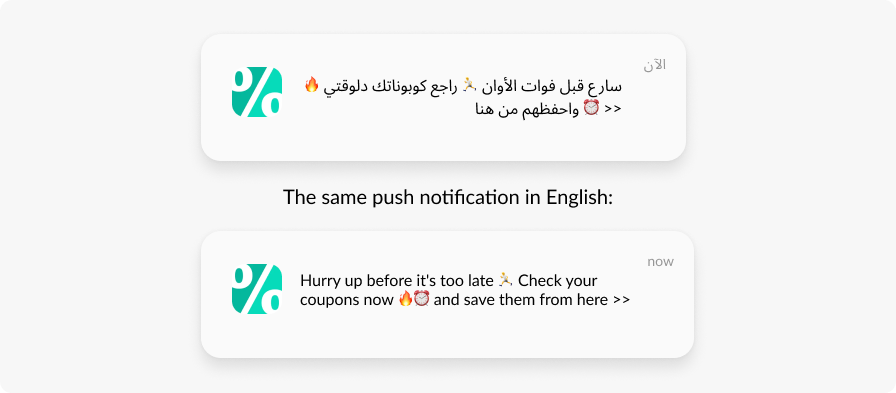
Persistent in its endeavors to engage inactive users, the company plans another interaction scheduled for the next day.
Day 1 Engagement: Another opportunity to reach out to inactive users
Those users who remained unengaged despite the initial “Day 0” push get another nudge on Day 1:
This time, users are enticed by an extra 10% discount:
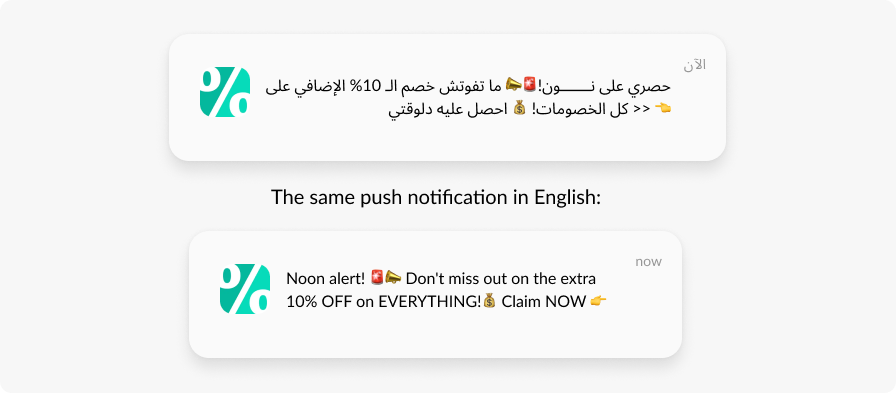
During this stage of the flow, the objective is to encourage users to open the app within two days and then engage with the app within one hour:
- Users who both open the app and engage with it, join the active audience in the messaging flow relating to Day 2 Engagement;
- Users who open the app but don’t engage, get a push notification with a 90% discount for restaurants delivery:
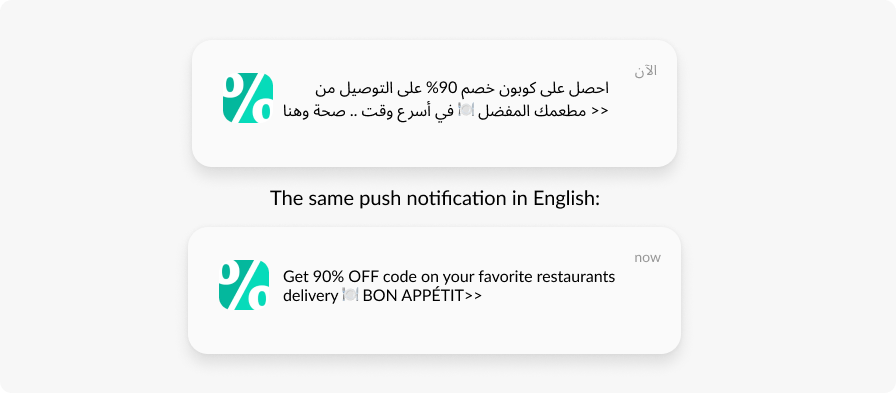
- Users who don’t even open the app, get the following message:
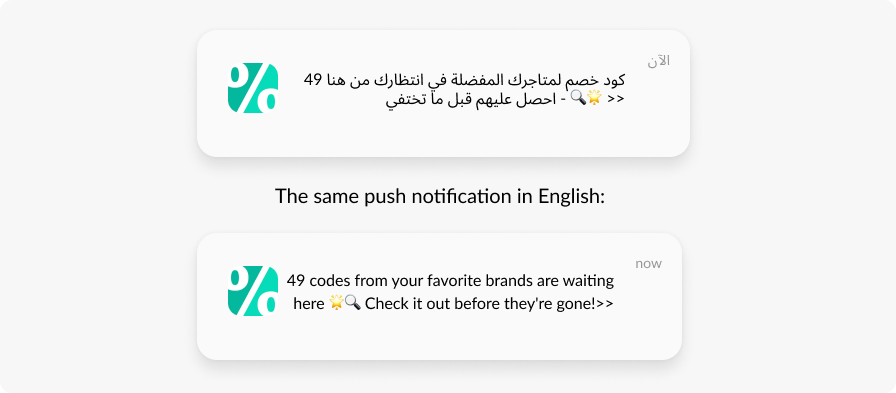
As a result of the messaging on Day 0 and Day 1, the app additionally engages 16% of users who didn’t engage within the first hour independently.
Engagement and retention from Day 2
To ensure the retention of active users acquired on Day 0 and Day 1, the Almowafir app implements a continuous engagement campaign, wherein push notifications are sent every two days. Let’s now delve into the content of these messages and analyze the corresponding retention rates for each day.
Day 2:
Retention = 41 %
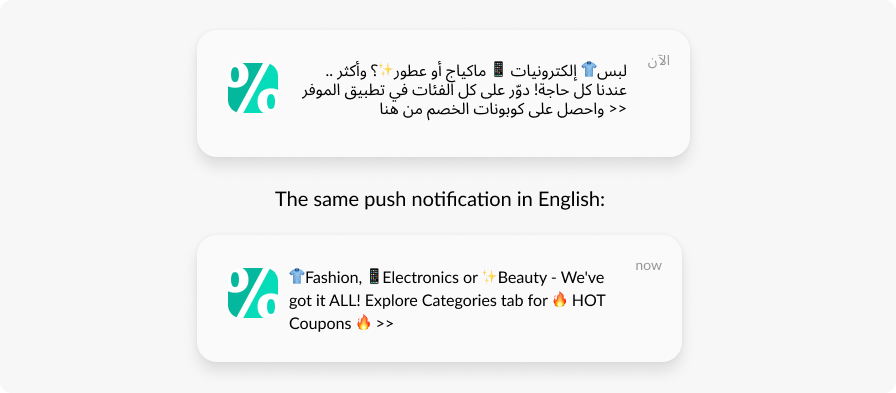
Day 4:
Retention = 33%
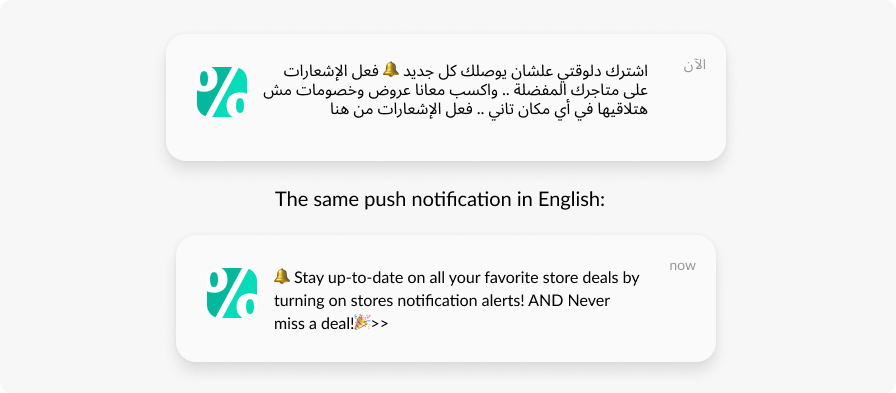
Day 6:
Retention = 30%
Push notifications delivered on Day 6 are part of a referral campaign encouraging users to rate the app:
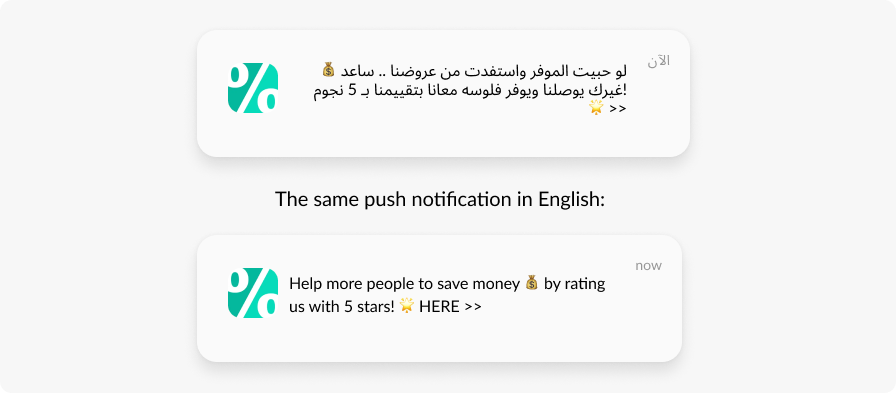
The messages sent on Day 6 demonstrate an impressive Click-Through Rate (CTR) of 59.7% and 65.4% respectively. 🔥
Day 8:
Retention = 30%
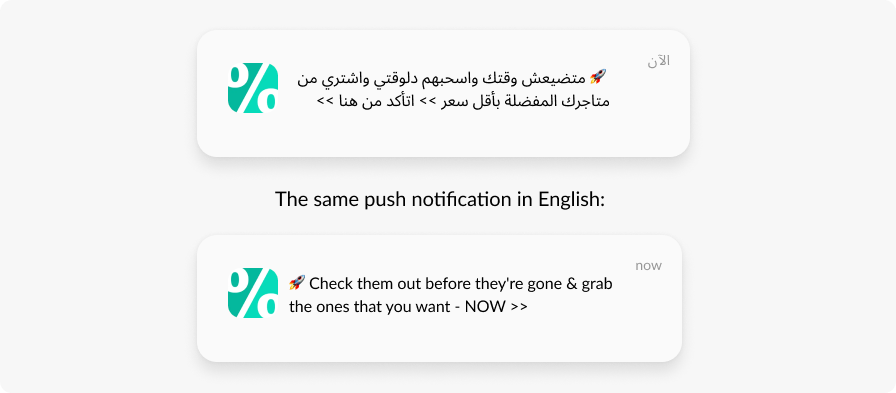
Day 12:
Retention = 29%
Push notifications delivered on Day 12 are part of a referral campaign encouraging users to share the app with friends:
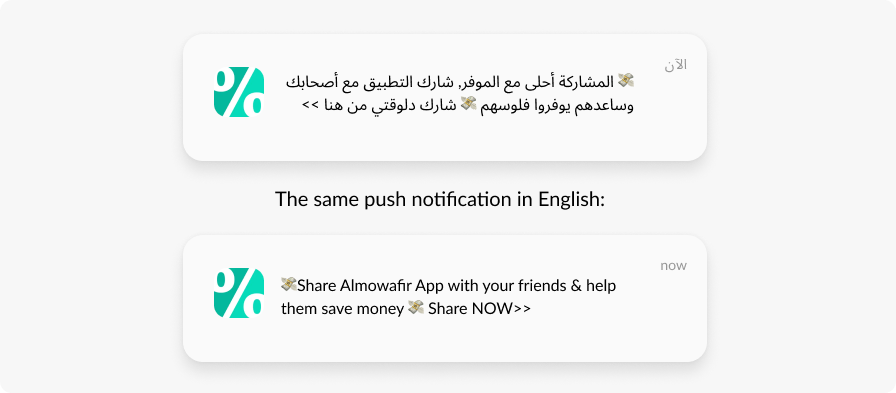
Onboarding campaign results
✅ 67.4% of users successfully convert to the target action of using coupons;
✅ By the end of the onboarding campaign (Day 12), the retention rate is 29%;
✅ Only 4% of users complete the onboarding journey tagged as “Not active,” which indicates a high level of user interest and involvement.
Repeat conversion campaigns
To encourage users to take a repeated intent action (“GetCode”, “GetDeal”, “ClickOnCopy”), the app’s marketing team segments users by their favorite product categories and brands.
Targeted offers for buyers of a certain product category
This campaign initiates by specifically targeting users who have indicated an interest in a certain product category, for example, “food delivery” or “restaurants”:
To verify whether users are genuinely willing to engage with the specified category, the app sends the following push notification:
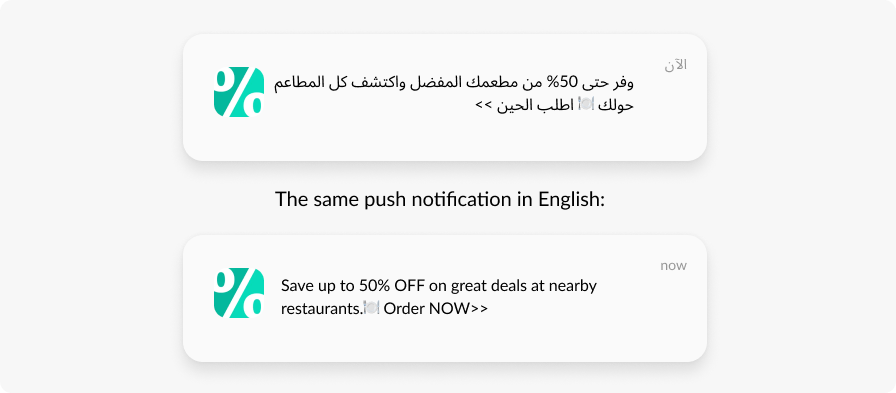
A waiting period of one day is observed to track whether the push notification was opened by the user:
Those who have successfully engaged with the app in the indicated time frame, get tagged as “Foody user”:
Those who haven’t engaged with the app, get a push notification reminder:
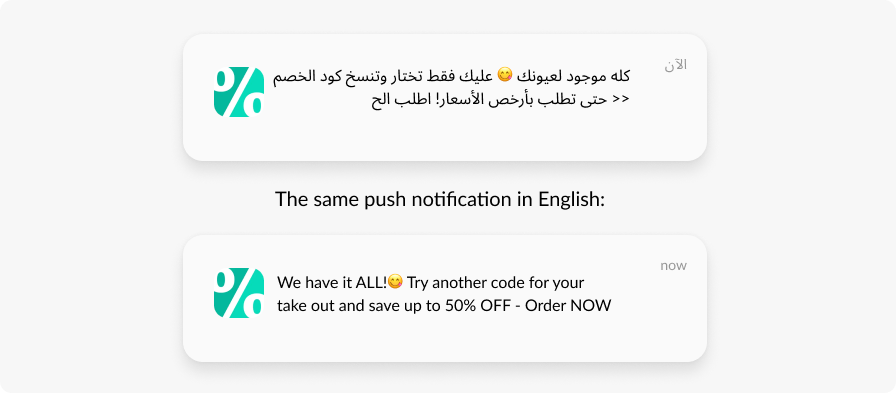
Results of the targeted campaign for a product category
3.3% of users complete a repeated intent action (using a coupon) within the Food Delivery category.
Targeted offers for buyers of a certain brand
To motivate users with a preference for specific brands to engage in repeated targeted actions, the app implements the following campaign tactics:
- Trigger-based entry: users enter the journey when they trigger the target Event with the specific Event attribute (for example, “brand: American Eagle”):
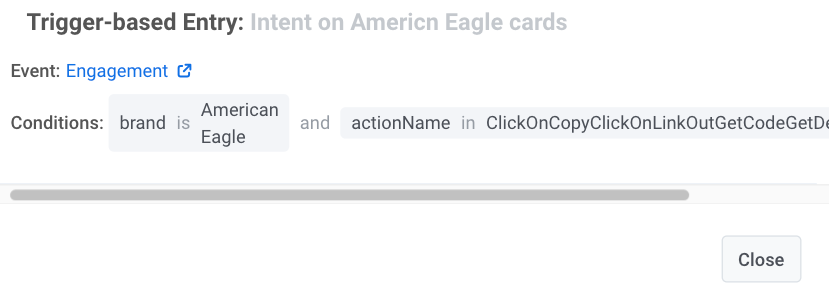
- Segment Split: users interested in other brands are excluded from the journey, ensuring a focused approach:
- Applying dual Tags: those users who have completed the journey are assigned the “CategoryFocus: FashionFocus” and “BrandFocus: American Eagle” Tags:
By implementing those tactics, the campaign not only enhances user engagement but also ensures a more detailed segmentation of the user base.
Results of the targeted campaign for a brand
3.3% of users engage in repeated target actions (using coupons) specifically related to the American Eagle brand.
Loyalty campaigns: nudging users to upgrade
Almowafir’s loyalty program is based on encouraging users to take various actions within the app, such as inviting friends or exploring new deals.
The program includes six levels (Tiers). Across levels, upgrade campaigns employ similar tactics and journey elements. Let’s explore those elements.
- Event-triggered segmentation
The app targets users according to the Tier they’ve reached – the journey initiates when a “LevelStarts” Event is triggered:
- Segment Split by country
The app targets users based on their country, delivering offers and rewards that are tailored to each region:
- Segment Split by bonus points
Messaging flow differentiates according to whether users have enough bonus points to upgrade or not:
-If users have less than X points ➡️ they are prompted to earn more rewards;
-If users have more than X points ➡️ they are prompted to upgrade to a higher Tier:
- Personalized push notifications
The content of push notifications included in the campaign is tailored to user scenarios, including their bonus points status, journey stage, and current Tier level. Push notifications can:
- Prompt users to earn more points and claim rewards:
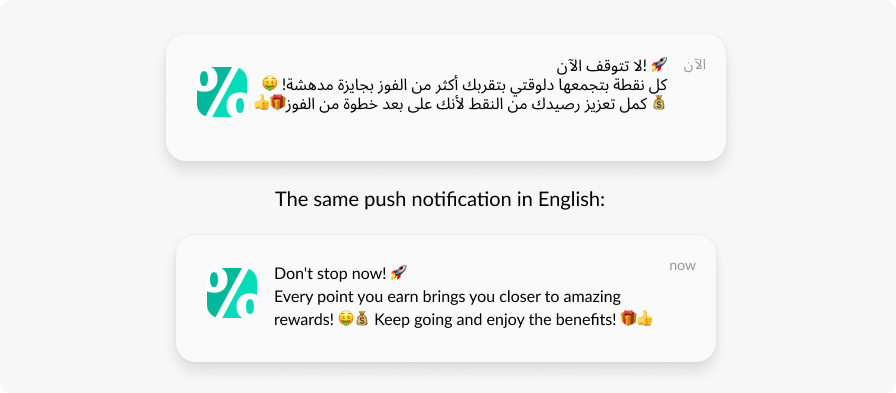
- Keep users updated about their bonus balance. This is done by the Dynamic Content feature that automatically incorporates information relevant to a particular user into the message:
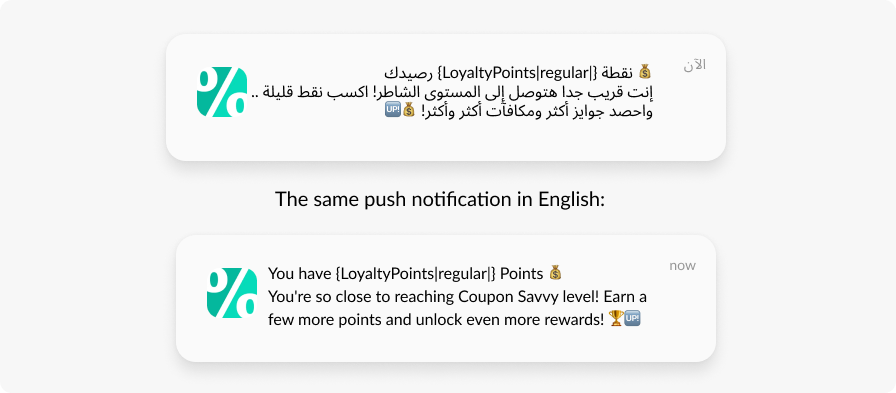
- Prompt users to upgrade:
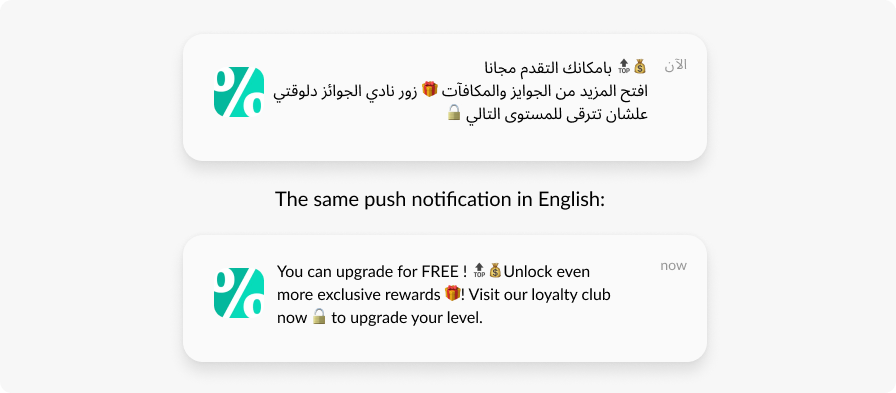
- Ignite users with a sense of urgency. This is done by a specific type of push notification known as a “Last chance” push, which encourages users to take immediate action before the opportunity expires:
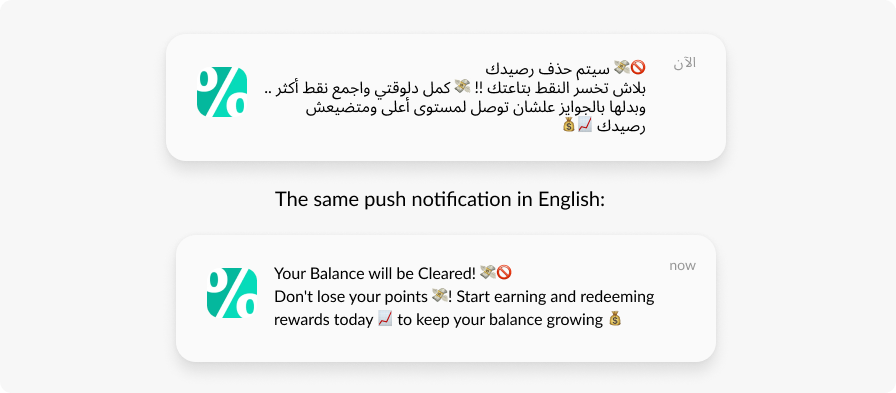
Campaign results:
Up to 3.6% of users complete an intent event by the end of the campaign.
Re-engagement campaigns: winning lapsed users back
For this campaign, Almowafir’s team effectively leverages behavior-based segmentation to pinpoint inactive audience.
The campaign targets users who haven’t opened the app for 10, 15, 20, and 30 days:
Here is an example of a re-engagement push notification received by the selected segments:
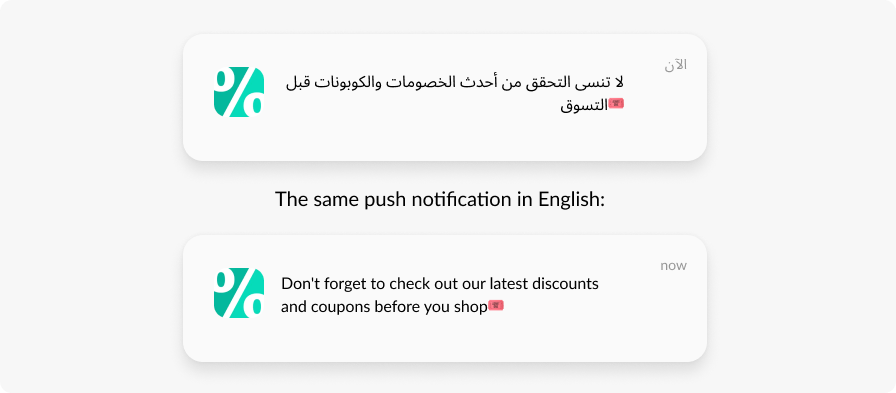
Results of the re-engagement campaign
Here is the percentage of users enticed to return to the app based on their period of inactivity:
✅ 5.5% – after 10 days
✅ 4.3% – after 15 days
✅ 3.8% – after 20 days
✅ 3% – after 30 days
Only 9% of users remain inactive at the end of the campaign, receiving the “Inactive for 30 days” tag:
Taking care of customer experience
Almowafir is quick to respond to both negative and positive user experiences, ensuring that users feel supported and engaged with the app.
- Coupon didn’t work
If a coupon didn’t work, Almowafir sends a push notification to address the issue and provide assistance in resolving it. The message aims to offer alternative solutions:
If a coupon didn’t work, Almowafir sends a push notification to address the issue and provide assistance in resolving it. The message aims to offer alternative solutions:
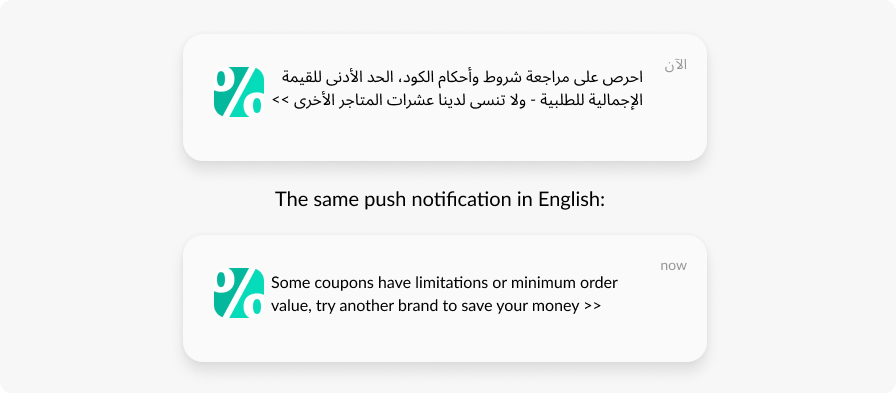
Here is a message that users receive if the coupon didn’t work again:
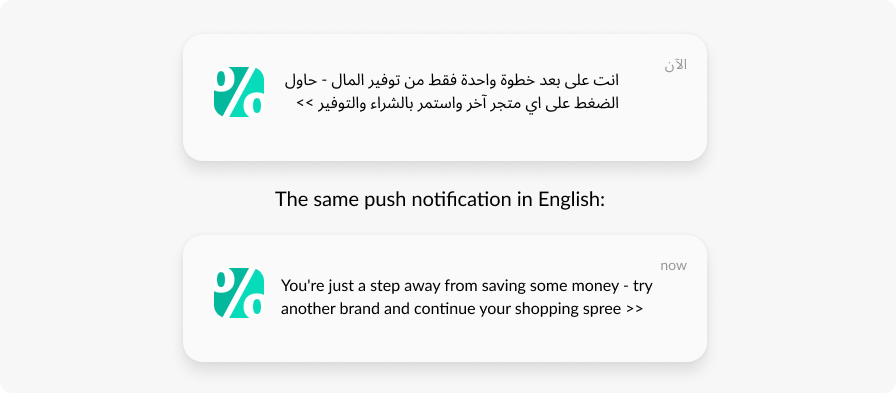
- Coupon successfully worked
After a successful coupon redemption, Almowafir takes the opportunity to nudge users toward further engagement.
Users may receive a push notification encouraging them to take another target action, such as using another coupon and exploring related offers:
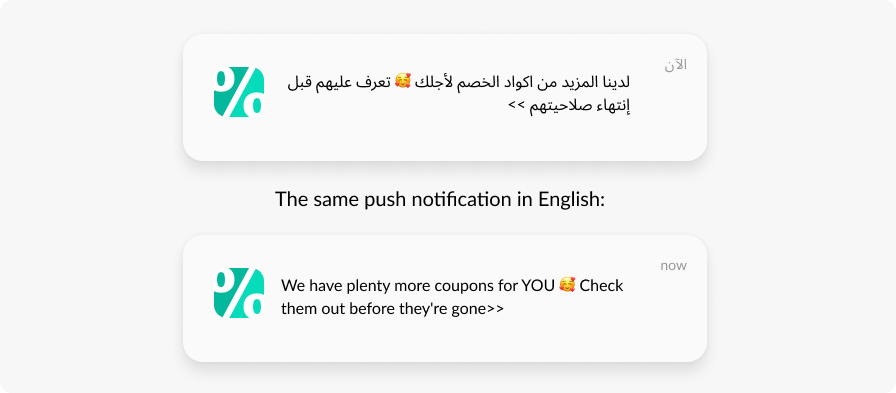
…or even referring the app to their friends:
By proactively addressing both negative and positive experiences, Omada strives to deliver a seamless and rewarding user journey for Almowafir customers, ensuring that they feel valued and supported at every step of their interaction with the app.
Results
🏆 7.5% of users convert to another target action (use the coupon) or refer the service to their friends after a positive experience with the app.
🌟 26.6% of users still convert to the target action after a negative experience.
From API to Customer Journey Builder
Omada initially solved many marketing cases with the use of Pushwoosh API. However, the company eventually transitioned to Pushwoosh Customer Journey Builder. According to Mark Astrin, this shift offered several advantages:
✅ No need for development to create a new flow;
✅ Journey and message editing can be done faster;
✅ Reports are easier to access;
✅ Trigger-based messaging is easier to use and needs only a short development time to implement new events.
Mark Astrin
Product and Development Manager at Omada
As an active user of Pushwoosh Customer Journey Builder, I would recommend it to the following types of apps:- Apps with a loyalty or cashback program;
- Game apps thriving to increase user retention based on their activity in the game;
- Banking or financial apps that can send push notifications based on triggered events, as those events can also be server-side ones. The ability to implement webhooks into the journey is super powerful for companies with development teams, as they can perform extra actions in their own or partners’ backend based on the trigger. It can trigger a Telegram bot message, an SMS, or any other service.
Conclusion: Omada effectively converts occasional shoppers into loyal customers
Omada partnered with Pushwoosh to implement automated lifecycle messaging into the Almowafir app. Omada leveraged Pushwoosh Customer Journey Builder’s advanced capabilities in segmented and event-triggered messaging to orchestrate highly effective campaigns.
By automating key touchpoints such as onboarding, (re)engagement, loyalty program progression, and user referrals, Omada provided users with ongoing value, leading to repeated interactions and eventually turning occasional shoppers into loyal customers. This approach yielded an increase in the app’s retention rate.
If you’re looking to enhance user retention and maximize the potential of lifecycle marketing for your app, get in touch with Pushwoosh Team:



















